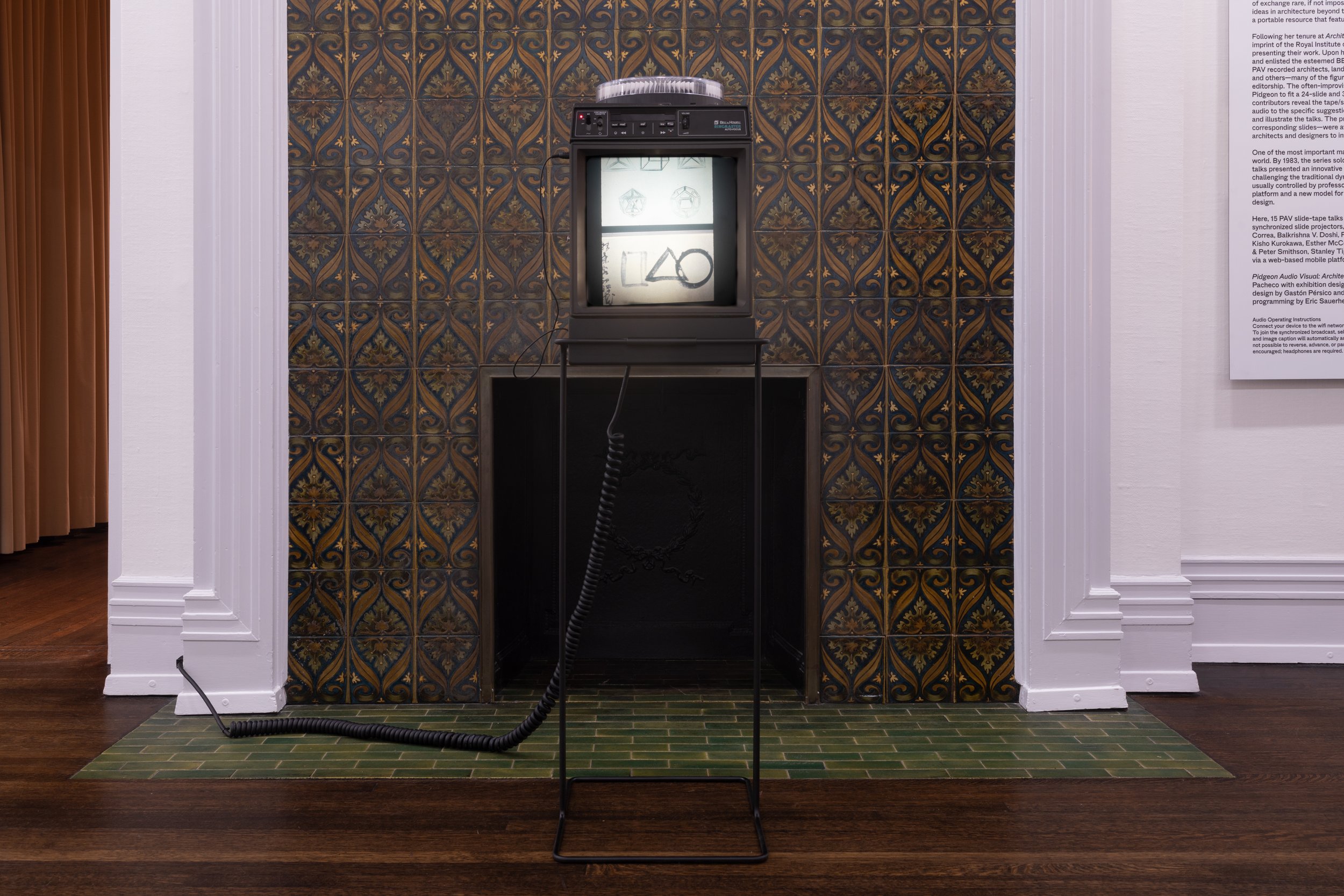REVIEW: “Pidgeon Audio Visual: Architects Speak for Themselves” at the Graham Foundation
View of "Pidgeon Audio Visual: Architects Speak for Themselves," Graham Foundation, Chicago. Photo: Nathan Keay.
REVIEW
Pidgeon Audio Visual: Architects Speak for Themselves
Oct. 29, 2022 - Feb. 25, 2023
The Graham Foundation
Madlener House
4 West Burton Place
Chicago, Illinois 60610
By David Sundry
Pigeon Audio Visual: Architects Speak for Themselves (PAV), a show that recently closed at the Graham Foundation on February 25th, is a series of 15 slide-tape talks with leading architects selected from the PAV archive of over 200 presentations. In addition to architects, the archive also includes presentations by urbanists, theorists, artists, designers and landscape architects. The tape-slide talks were produced between 1979-1989 and consist of studio sessions with the speakers that were each edited into a 24-slide/30-minute format. Monica Pidgeon, the editor of the prestigious RIBA (Royal Institute of British Architects) and Architectural Design (AD), an influential London-based magazine, developed these presentations to be distributed to libraries and institutions in an era when international travel was less available, difficult and expensive.
The slide-talks were presented on four simple screens in the Foundation’s second floor gallery. Each screen was supplied with a single stool and a clean understated armature that mounted the projector to the ceiling and floor. The PAV selections presented in the galleries encapsulate a key period in recent architectural history – the slow demise of the modern project, the subsequent ascendency of Postmodernism as the reigning style and the almost immediate deconstructive critique of Postmodernism after its succession.
Reyner Banham, "Mythical Vernacular Moments" credits slide, Pidgeon Audio Visual PAV 08/8210, 1982. Courtesy Pidgeon Digital.
The slide-talk format, though not revolutionary, was still at this time a novel manner in which to engage students, audience and institutions through technology, embarrassingly simplistic by today’s standards, but still a technological solution, nonetheless. The 15 selected slide-tape talks represent a cross section of now world famous but at the time emerging or moderately established practitioners. From this vantage point the various talks present a mini-history of an important transitional decade in which a number of now taken-for-granted approaches to building and the environment were being developed and, interestingly, bring forth a perspective where one glimpses a now very different alternate future development for these once novel approaches.
This decade from 1979-1989 represents a moment where a number of concepts and material approaches to architecture were being developed - where formal and stylistic exploration and critique combined with an increasing industrial capability and an emerging world-wide distribution system. Cumulatively, the slide-talks approach something like a prelude to the digital practices of today. Looking back, we know how these practices developed when digital technology became both affordable and accessible but, at this moment, that future had not yet arrived and these practices’ not-yet-realized ability to explore these future avenues opens up another possibility of development. This era was pregnant and these practices were on to something. By sitting in this gallery and listening to one slide talk while simultaneously observing the images of several other slide-talks something historical comes forward – an approach to architectural practice limited by important parameters (economic, material, technical) that push back against conceptual and stylistic excess and carve out a space prior to the digital turn at the end of last century. This mini-history highlights the digital turn as a moment that irretrievably unleashed an era of unrestrictive ability to realize form and redefine function but also allows us to ask, “to what effect?” This brings to mind Cedric Price’s provocation, “technology is the answer, but what was the question?” restated as “digital is the answer, but what was the question?” Countless cultural pundits theorize a techno-utopian future, a gee-whiz sci-fi spectacle complete with socially engineered humanity as its photoshopped inhabitants. Maybe it is time to resurrect theory from the wreckage of history and technology – where history is alive in the present and provides parameters to utopian side-steppings and to work with vision in a narrowly managed field of opportunity.
Like what you’re reading? Consider donating a few dollars to our writer’s fund and help us keep publishing every Monday.



